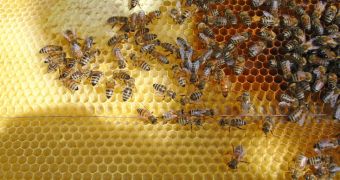The set of factors that have been working together for the past couple of years to relentlessly exterminate bee populations around the world just got a new addition. A recent study by the United Nations shows that globalization plays an important role in killing off the bees.
Authors discovered that modern attempts of industrializing pollination are making matters even worse.
According to the team behind the work, it would appear that globalization is making the transference of bee pests and disease from one area of the world to the other easier than ever before.
It is also becoming increasingly easy for these afflictions to combine, and give rise to mutants, to which the bees have no defense. This may help explain why worldwide bee populations are collapsing.
With the massive opening up of trade, companies can transfer tainted products so far away from their points of origin, that it would normally take the disease thousands of years to get there on its own.
Moving a new bee pathogen from Siberia to Patagonia now requires about a week by ship. Before the rise of commerce, it's doubtful that the pathogen would have reached Patagonia in the first place.
This study is only the latest in a string of researches published as experts are trying to determine what is causing the bees to die off. The condition has been called “colony collapse disorder” (CCD).
The areas most affected by the population decline are in Europe, especially the United Kingdom, Asia and the United States. Measures taken thus far to minimize the spread of CCD have only resulted in more deaths.
One approach has been to mass bees in giant, industrial-size colonies, but this led to a better propagation of the fungal agents that were killing the insects in the first place. Attempts to move the hives around have also failed, resulting in a faster spread of the disorder.
“We are creating the ideal conditions in the man-made hives that promote pests, chemical contamination and other factors,” an UN official told The Guardian newspaper.
“This is the irony and [it is] not just confined to bees – one thinks of natural forests versus plantations and monoculture crops [which are also more susceptible to disease],” he adds, quoted by Our World.
The new report, entitled Global Bee Colony Disorders and Other Threats To Insect Pollinators, was authored by experts with the United Nations Environment Program (UNEP).
Among the factors responsible for CCD, they identified air pollution, the rise of fungal diseases and parasite infections, loss of habitats, increased use of pesticides, and loss of wild flowers due to conversion of forests into agricultural lands.
“The way humanity manages or mismanages its nature-based assets, including pollinators, will in part define our collective future in the 21st century,” explains UNEP executive director, Achim Steiner.
“Human beings have fabricated the illusion that in the 21st century they have the technological prowess to be independent of nature. Bees underline the reality that we are more, not less dependent on nature’s services in a world of close to seven billion people,” the officials concludes.

 14 DAY TRIAL //
14 DAY TRIAL //